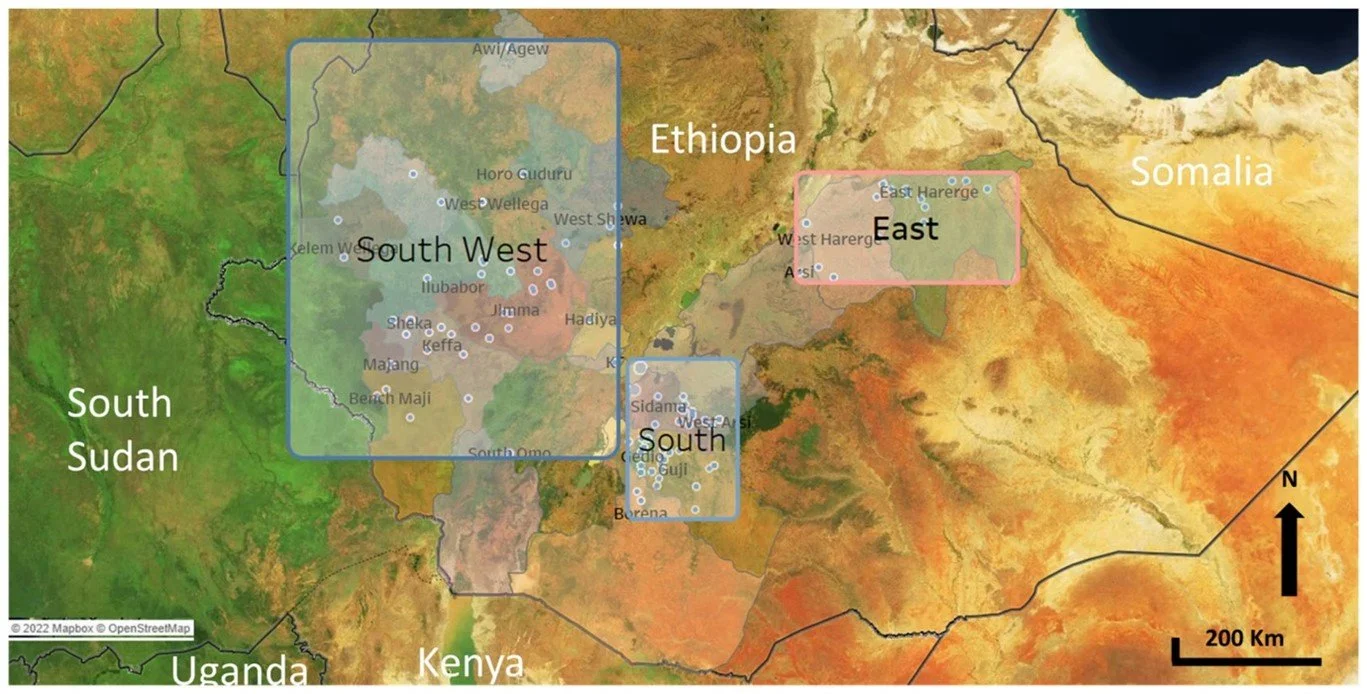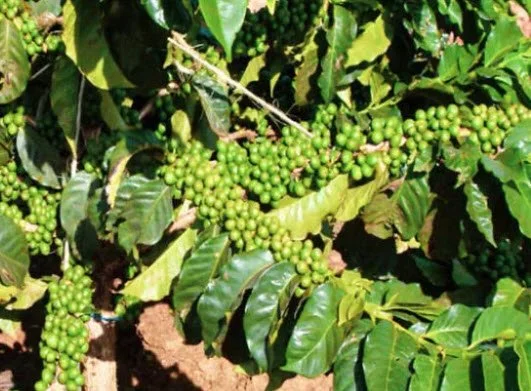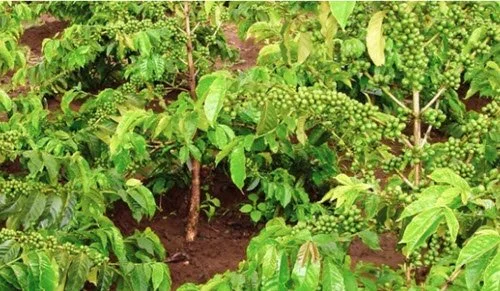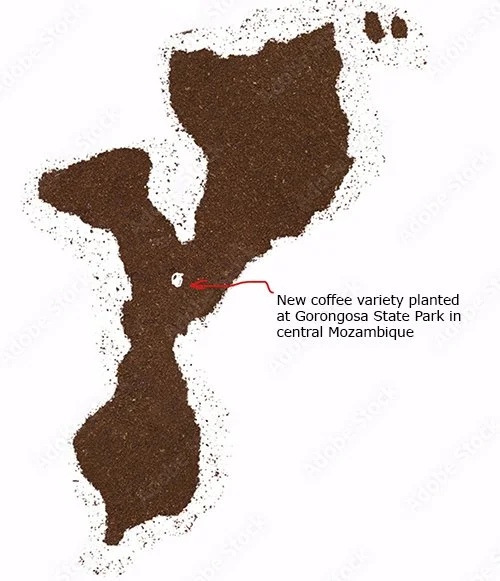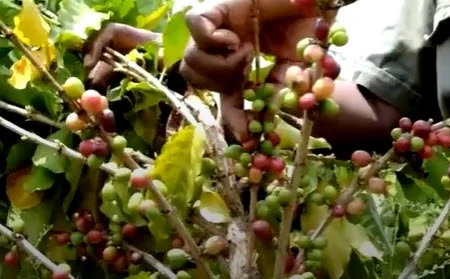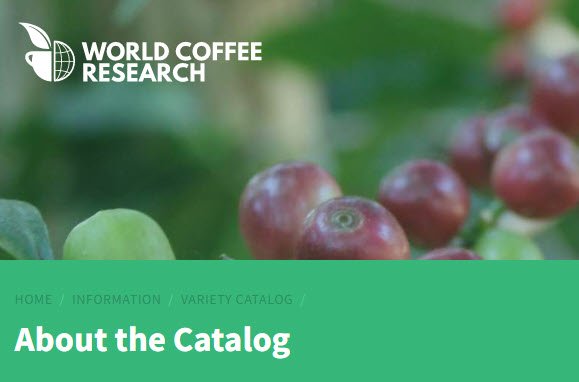Disease-resistant coffee trees: a cozy update
Perry Luckett, CoffeeMan1
For several years, we’ve been covering the important issues of climate change and coffee-plant diseases, both of which have increasingly threatened the coffee industry’s sustainability.
Three previous coffee blogs cover parts of today’s subject.
Our guest blogger Colleen Luckett wrote two of them in July 2018:
The first covered how climate change was affecting coffee yields (https://www.koffeekompanions.com/blog-cozycomments/7242018?rq=disease).
The second described a few efforts to combat this change by improving forests, creating better ecologies for the bees that pollinate many coffee trees around the world, and offsetting drought conditions with dryer processing of harvested coffee beans (https://www.koffeekompanions.com/blog-cozycomments/7202018?rq=disease).
In November 2019, I added a fuller post on scientific developments, farming practices, and new pesticides that farmers are using to combat the attacks of diseases on arabica coffee plantations (https://www.koffeekompanions.com/blog-cozycomments/1192019?rq=disease)
This coffee blog post is a cozy reminder that science is ever progressing
Today’s post picks up the thread of genetic research into coffee-plant varieties that can combat both major threats to the industry: climate-change-induced drought or floods, as well as various diseases that attack the trees. Genetic testing for coffee plants is a relatively new field, but it has seen significant advances in recent years. Researchers are using various techniques, such as DNA markers and genomic analysis, to improve the breeding and cultivation of coffee plants.
One of the main goals of genetic testing for coffee plants is to identify genes associated with important traits, such as disease resistance, yield, and quality. Plant scientists can then use this information to develop new varieties of coffee plants that are more resistant to disease, produce higher yields, and have improved flavor and aroma. As consumers of quality coffee, you and I benefit directly from this research.
Another area of focus for genetic testing is in conserving coffee plants. With the loss of wild coffee varieties and the growing threat of pests and diseases, researchers are working to identify and preserve coffee plants’ genetic diversity. This work includes characterizing the genetic variation of wild coffee varieties and identifying regions of the coffee genome that are important for adaptation to different environments.
Many companies, research centers, and universities around the world are actively working on different aspects of genetic testing for coffee plants. With the current knowledge, the plants that have high resistance to diseases like coffee leaf rust, coffee berry disease and coffee borer beetle are being developed and are ready for commercial production.
Arabica coffee: covers good news from recent genetic “fingerprinting”
In a study published last month, researchers discovered new information that pinpointed genetic clusters and domestication routes for the arabica coffee species that took place centuries ago—in commercial coffee’s infancy.
Geographical origin of Ethiopian coffee samples included in the study. Samples originate from several districts in three regions: Southwest, south, and east. Southwest and south regions are the natural habitat of C. arabica in Ethiopia. Credit: Open-access image from Agronomy, https://doi.org/10.3390/agronomy12123203
The new research—led by France-based Christophe Montagnon of RD2 Vision—involved the genetic fingerprinting of 555 different strains of arabica across Ethiopia, Yemen and elsewhere in the world. The authors describe it as the “first study to cover the entire genetic diversity of both Ethiopia and Yemen.” [NB]
The good news: no loss of genetic diversity among cultivated arabica since groundbreaking research more than 50 years ago. As the authors said: “While legitimate concerns have been raised on the impact of deforestation and climate change on the erosion of the genetic diversity of C. arabica in Ethiopia, our study did not detect such genetic diversity loss for cultivated coffee.” This means cultivated arabica appears to be holding its own against humans’ negative effects on the climate.
A second positive outcome of this study was its classification of Arabica’s origins into six main genetic mother populations. They found all of the world’s current cultivated coffee traces back to at least one of these groups: Core Ethiopia 1, Core Ethiopia 2, Ethiopian Legacy, Typica-Bourbon, New-Yemen and Harrar. If you’re wondering why this discovery is so important, as I did, the answer lies in efforts to develop stronger hybrid crosses between genetically distant parents in both Ethiopia and Yemen. These hybrids typically have stronger defenses against the natural ravages of climate change and loss of forests.
Coffee research in Kenya: one cozy example of hybrid improvements
Kenya has developed a disease-resistant hybrid called Ruiru 11—a dwarf tree with a good cup profile and high yield because of the crossbreed’s hybrid vigor. Kenya’s coffee market now sells a lot of Ruiru 11 because its resistance to coffee berry disease makes it less expensive to produce. But some coffee experts say it lacks the rich aroma of variety SL28, which has been in the country since the 1900s.
Ruiru 11 coffee variety in Kenya. Notice its green leaf tips and closely spaced nodes, from which coffee flowers and berries grow. Trabocca website (TW)
To help overcome this flavor deficit, farmers are grafting the root system of established SL 28 and SL 34 varieties with Ruiru to get both the SL’s cup quality and Ruiru 11’s disease resistance and productivity. The latter in part comes from this variety’s closely spaced nodes, each of which produces flowers and, eventually, coffee berries. [TW]
As of 2010 Kenya also has another new cultivar: Batian. Under development for the past 20 years, Batian is expected to cut production costs by up to 30 percent because it resists coffee leaf rust and coffee berry disease. In fact, according to authorities in Kenya, Batian eliminates these diseases from the plants.
Batian dwarf trees showing strong yield. Trabocca website (TW).
In the past, farmers have had to spray against diseases during the dry season, but with climate change causing erratic weather, sudden showers could wash the fungicides off and make their investment ineffective. As a result, coffee production fell off to position five in Kenya’s foreign exchange trade, with an average annual yield of just 50,000 tons. That’s down from a peak of 130,000 tons in the 1987-88 crop.
Batian can yield five tons per hectare (2.47 acres) for a farmer following all recommended practices, compared with only two to three tons from current varieties. It also begins producing in just the second year after planting and has bigger cherries that ripen faster than the old varieties. So far, planting efforts have focused mostly on the foothills of Mt. Kenya. Baristas who have cupped Batian say it has fine character and better taste than SL28, so it certainly looks like Kenya’s variety of the future. [HNM]
New coffee variety to resist drought and disease in Mozambique.
Climate- and disease-resistant coffee trees help Mozambique’s industry survive
Another key example of how resistant varieties of coffee trees strongly affect surrounding communities is in the farming area at the southern end of the Great African Rift Valley in the heart of central Mozambique, Southeast Africa. Specifically, the farms around Mozambique's Gorongosa National Park have developed a variety that thrives in the shade of indigenous trees. It has given people living there a longer-term incentive to protect the rainforest, which has lost nearly 250 acres of tree cover per year over the past 40 years.
This incentive was hard to come by during a civil war that killed about one million people between 1977 and 1992. The park, once considered one of Africa's finest, became a conflict site and lost almost all of its wildlife. As population and urban communities grew after the war, reforestation efforts slowed down because people poached remaining animals and cut down forests for firewood, agriculture, and housing. Meanwhile, weather patterns have grown increasingly erratic in Mozambique, where climate shocks including repeated cyclones have offset livelihoods in one of the world's poorest countries.
Disease-resistant coffee trees in Mozambique produce value for small-scale farmers.
To counteract these combined disasters, Gorongosa Park's sustainable development department has been studying coffee tree varieties from around the world that are resistant to pests, disease, drought and prolonged rainy seasons. Last year, for example, communities around Gorongosa planted more than 260,000 coffee trees and 20,000 indigenous trees.
As a result, the park now has 815,000 coffee trees planted over 600 acres of land. More than 800 small-scale farmers, 40% of whom are women, pick the green coffee, dry the beans and sell them. Families can now send their children to school and, although they sometimes experience drought with reduced coffee crops, harvests usually provide them some money.
Coffee catalog covers many varieties to aid planting decisions
Because a coffee tree lives about 20 to 30 years, the decision producers make about which variety to plant will have consequences until the next generation. If a farmer makes a poor decision on variety, the cumulative loss can be huge. Most coffee farmers—who earn their livelihoods based on the decisions they make about what kind of coffee to plant—don’t typically have access to transparent information about available varieties and how they differ. The lack of a comprehensive, up-to-date coffee catalog has put farmers at risk and perpetuated chronically low yields around the globe.
Online catalog of coffee varieties aids small-scale farmers for planting. World Coffee Research website (WCR1)
The purpose of the World Coffee Research organization’s expanding coffee catalog is to lower the risk associated with coffee farming. It offers direct information to farmers and other farm renovation or planting decision-makers to enable them to make an informed choice about what variety is best for their circumstances. Choosing the right type of coffee lowers the risk of disease and pest losses, has consequences for quality in the cup, and will be critical for coffee producers facing rapidly changing climates. Choosing the correct variety—one that meets the farmer’s goals and needs—can significantly reduce losses because of diseases or pests, increase production volume, and increase quality. [WCR1]
In Central America, the coffee leaf rust crisis of 2012 affected nearly 600,000 acres of farmland. Nearly 300,000 coffee farmers needed to replant coffee because of it. To make the best possible decision about what kind of coffee to plant on a farm, producers need to know which varieties will be best adapted to their locations and farming approaches.
Meanwhile, most African coffee producing countries produce below 500 kg of green coffee per hectare compared to other countries in the range of 1000 kg to 2500kgs per hectare. This lower production rate profoundly affects farmers’ livelihoods when they’re paid per pound of cherry. There is widespread need for replanting with young trees, using improved varieties. Especially important are trees resistant to major diseases and pests, including coffee berry disease, coffee leaf rust, antestia bugs, and stem borers. World Coffee Research believes that more than 50% of coffee trees in Africa are at least 50 years old. Nearly all of them are old genetic stock and not well suited for the challenges of the 21st century, especially from climate change.
More resources on coffee plant development: A cozy list
Research journals: Many scientific journals publish articles on genetic testing of coffee plants, including journals such as "Theoretical and Applied Genetics," "Genetics," "Plant Science," and "Crop Science." These articles provide in-depth information on the latest research in the field and can be accessed through online databases such as JSTOR and PubMed.
Websites of research institutions: Many universities and research institutions have websites that provide information on their work on genetic testing of coffee plants. For example, the World Coffee Research (WCR) is an organization that carries out research on coffee and has a lot of resources available on their website. Other such institutions include International Center for Tropical Agriculture (CIAT) and Bioversity International.
Websites of coffee industry organizations: Organizations such as the Specialty Coffee Association of America (SCAA) and the Specialty Coffee Association of Europe (SCAE) have websites that provide information on their work on genetic testing of coffee plants and other related topics.
Social media groups: Many groups on social media platforms, such as LinkedIn, Facebook, and Twitter focus on coffee and genetics. You can join these groups to stay updated about the latest research, ask for recommendations, and connect with others in the field.
Online courses: Some universities and research institutions also offer online courses on genetic testing of coffee plants and related topics that can provide an in-depth understanding of the subject.
These sources are a great starting point for learning about genetic testing of coffee plants, but keep a critical eye on them because not all information online is accurate or up-to-date.
French press cozies from www.Koffee Kompanions.com keep your coffee hotter longer—throughout the brewing process.
While you’re researching and reading about coffee genetics, pull out your French press and taste what they’ve produced for us lucky consumers: your favorite fresh-roasted and flavorful coffee. Be sure to keep it hotter longer with our Koffee Kozee™ French press cozy at Koffee Kompanions. While you’re visiting our website, check out our Kup Kap™ cup cover for a great way to keep heat and flavor in your cup or mug. We’ve been taking coffee and tea drinkers (and ice cream eaters) to their cozy places since 1996!
Resources Used for this Blog Post
Author unknown, “About the Catalog,” http://bit.ly/3YeYsTY , World Coffee Research, 2022. [WCR1]
Nick Brown, “Researchers Write New Chapter in the History of the Arabica Species,” http://bit.ly/3y75Vd9, Roast Magazine, January 6, 2023. [NB]
D. R. S. Bueno, et al., "Integration of genomic data to improve coffee breeding," Plant Science, 2019.
Sofia Christensen, “Climate-resistant coffee trees could save Mozambique rainforest, http://bit.ly/3miZ25O , November 7, 2022. [SC]
Elian M. Hernandez, et al., "Phenotypic and Genetic Diversity of Coffee Accessions in the Global Coffee Germplasm Collection," Crop Science, 2019.
Helen Nyambura-Mwaura, “Kenya unveils new disease-resistant coffee variety,” http://bit.ly/3ERnKAu , September 9, 2010. [HNM]
M. C. C. de Oliveira, et al., "Genomic dissection of agronomic and quality traits in Coffea arabica and Coffea canephora," in Plant Science, 2018.
Trabocca website, “Kenyan Coffee Varieties: A Comprehensive Overview of The Top Varieties,” https://bit.ly/3ERYHNN , 2023. [TW]
J. Nicolás Urrea, Marta Llorente, et al., "Genomic prediction of coffee yield and resistance to leaf rust," Journal of Applied Genetics, 2019.
C. R. Vazquez, et al., "Genetic improvement of coffee: from marker-assisted selection to genome editing," Theoretical and Applied Genetics, 2018.

